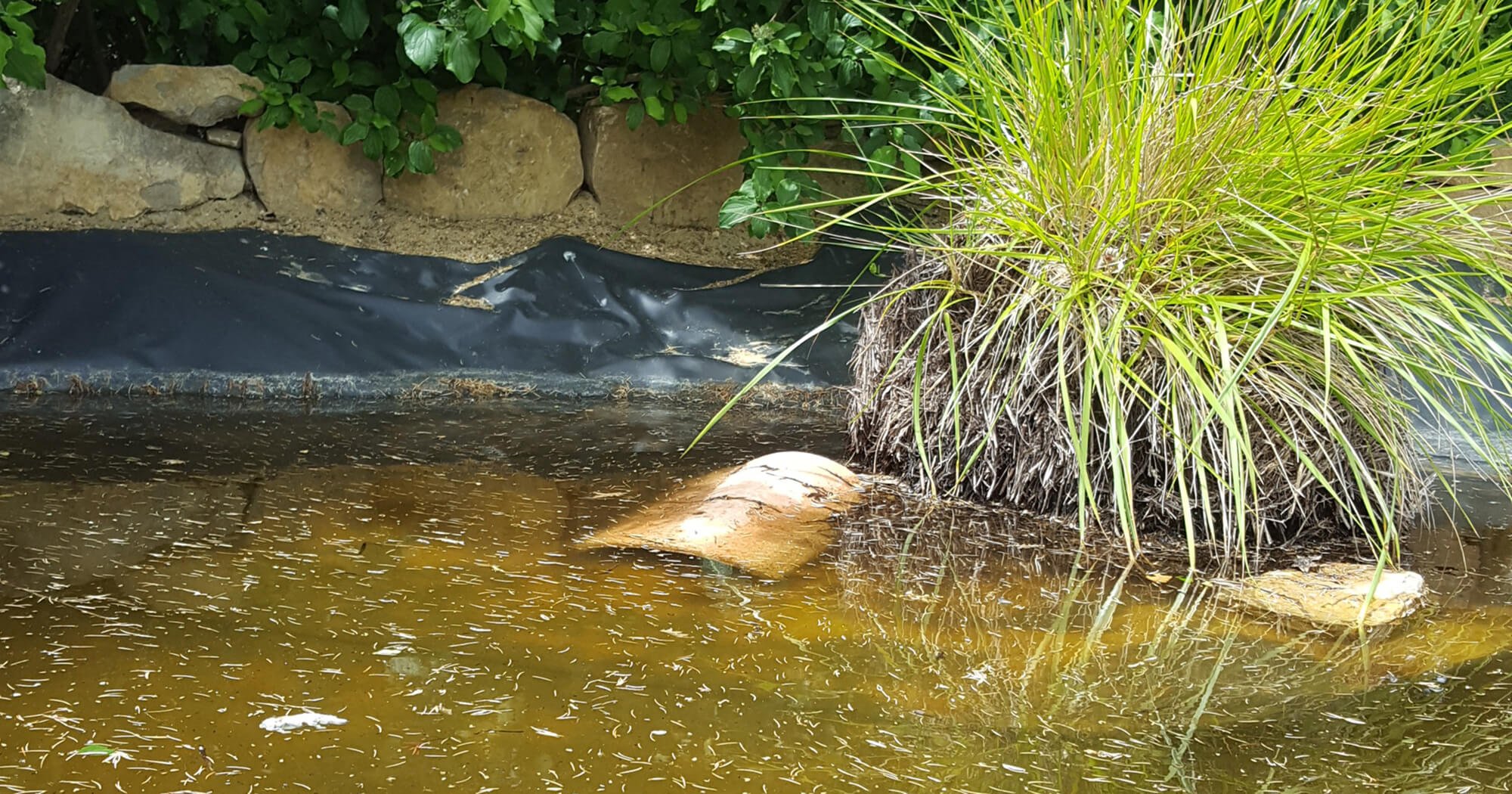Ponds provide many ecological services: water regulation (flood control, flooding and soil erosion) and water purification (both at the scale of a small plot of land and at the head of a watershed). In the vicinity of dwellings, farms or roads, they serve as watering places, ornaments, retention basins or fire-fighting reservoirs.
We created this natural pond specifically to accommodate this biodiversity. Find out how it was created and what its purpose is in this article.
Ponds and other wetlands, whether permanent or temporary, are above all habitats in their own right for numerous animal and plant species that come to breed, drink, feed, etc. Here are a few examples of the species that you may come across in this pond. Keep your eyes wide open!
Did you know? Our natural pond is filled every day by the water used to wash restaurant’s vegetables. It’s a great second life for drinking water. Find out more about our actions to promote sustainable cooking here.
Four species of the natural pond
Broad-bodied chaser
This 4-5 cm long dragonfly can be recognised by its very robust appearance: its abdomen is remarkably broad and flattened. It frequents stagnant water, preferring small, shallow, sunny, bare pools of water such as drinking troughs, sand pits and gravel pits. The adult depressed dragonfly hunts midges above small bodies of water. It only consumes live prey. Capture and consumption take place in flight.
Large red damselfly
This small damselfly with a red abdomen marked with black on the last segments can be confused with the delicate agrion, which has no black on its abdomen. It can also be distinguished from the delicate agrion by the black pterostigmas (coloured part at the end of the wings), which are reddish on the delicate agrion. The little fire-bodied nymph is particularly fond of plant-rich stagnant water in which to lay its eggs, so ponds are the perfect habitat for this species. The flight period is from April to August.
Did you know? Can you tell the difference between a dragonfly and a damselfly? First look at its wings: if they are joined when the insect is sitting, it is a damselfly! If you have good eyesight, you may also notice that its two eyes are separate, whereas they are touching in most dragonflies.
Common midwife toad
The Common midwife toad is a small toad (less than 5 cm) with characteristic vertical pupils. It is called a midwife toad because its male carries the eggs, in strings of 15 to 80, around his hind legs. He then deposits them in a damp area to allow them to hatch. Their tadpoles are very distinctive: large and light-coloured, they can be found all year round in a body of water.
The toad frequents a wide variety of habitats, but prefers relatively sandy areas with low vegetation, such as quarries, rocky slopes, riverbanks, etc. It can even be found in city centres, where it can be spotted thanks to its characteristic flutey song, which resembles that of the Earasian scops owl.
Did you know? 100% biodiversity for zero mosquitoes! Natural ponds are home to few, if any, mosquitoes, because the biological richness, and in particular the many predators, prevent them from proliferating.
Notonecta (common backswimmer)
The notonecta or “water bug” is a 13-15 mm insect that swims on its back, waving its hind legs like a paddle (yes, humans aren’t the only ones who canoe or kayak). It is one of the most common freshwater insects in Europe. It can be found in calm waters such as ponds. With its sharp, powerful snout, the notonecte captures and bites its prey: worms, larvae, tadpoles and even crickets!
An anecdote to tell at family dinners: the notonecte has no gills! Instead, it uses the tiny hairs covering its entire abdomen to capture and store air so that it can breathe in the water.
